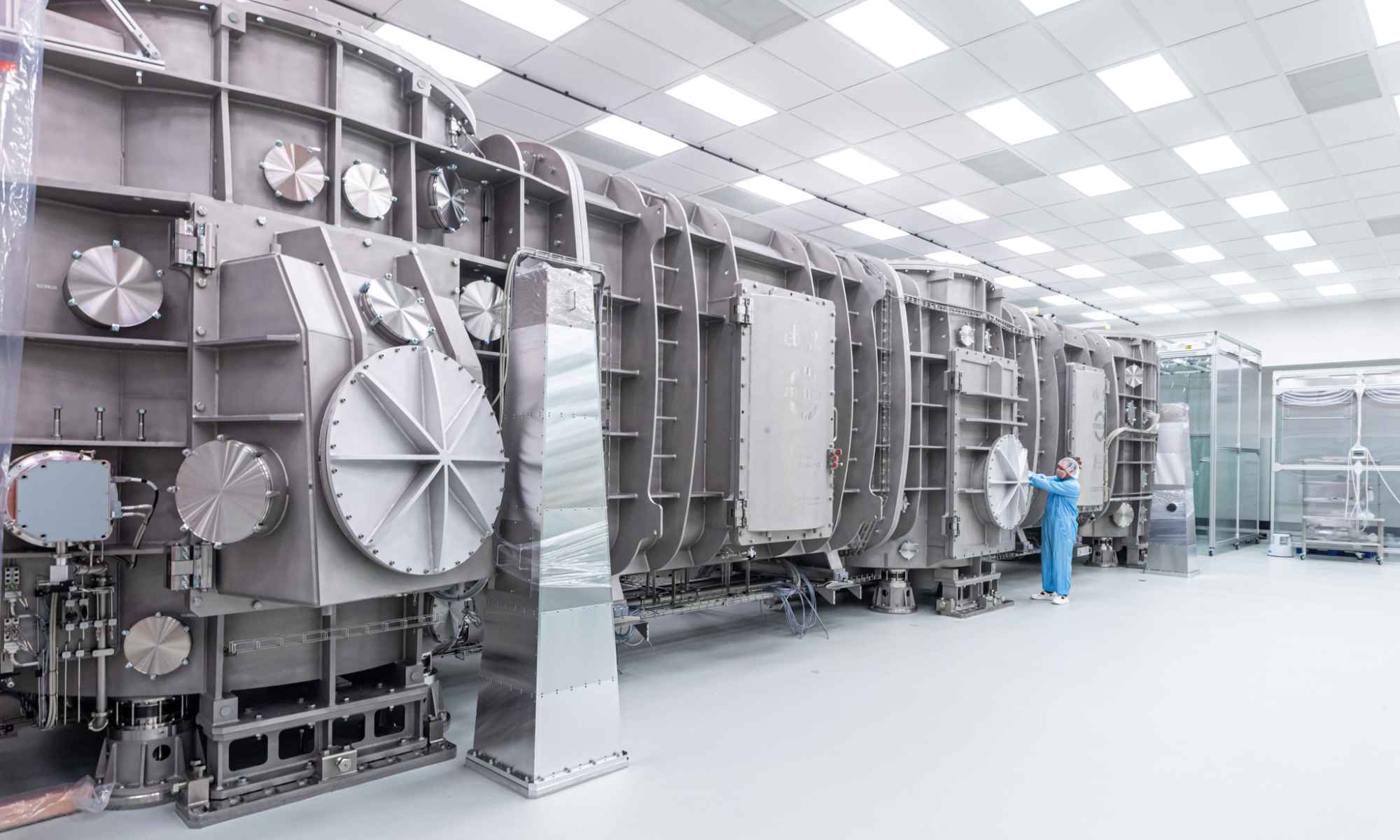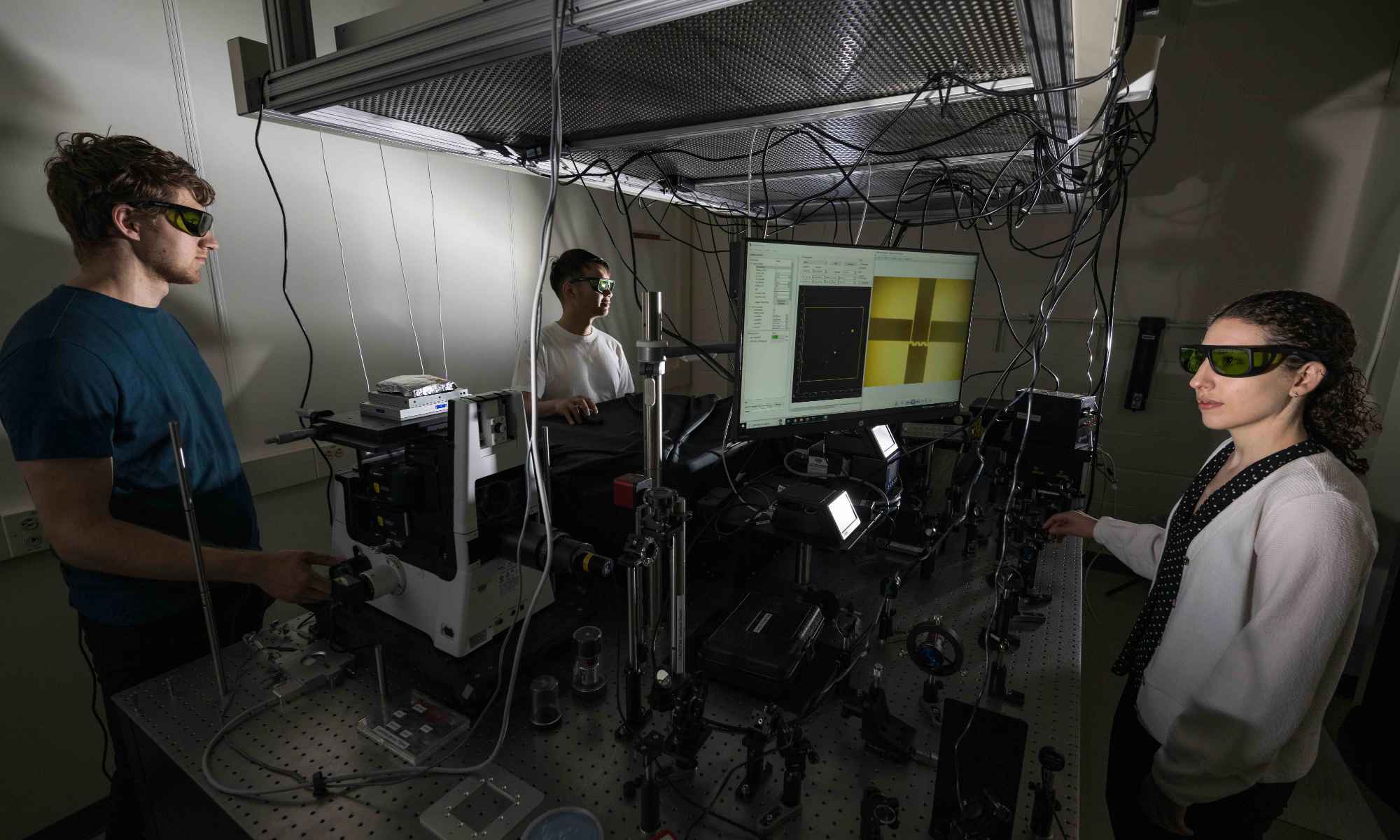The groundbreaking work of three scholars with ties to the University of Rochester took center stage when pioneering laser scientist Donna Strickland ’89 (PhD) and her Rochester advisor Gerard Mourou formally received the Nobel Prize in Physics, and Paul Romer, whose early career tenure-track appointment was in Rochester’s Department of Economics, received the Nobel Prize in Economic Sciences.
Strickland, who is now an associate professor of physics and astronomy at the University of Waterloo in Ontario, Canada, and Mourou, now a professor at the École Polytechnique in France, are being recognized for their Rochester work to develop “chirped-pulse amplification,” a technology that harnesses the power of lasers as precision tools and helped pave the way for laser-eye surgery, the machining of key parts for cell phones and other devices, tools for cancer treatment, and other clinical and commercial applications. The technology was the basis for Strickland’s 1988 doctoral dissertation at Rochester, where she was a graduate student working with Morou at the University’s Laboratory for Laser Energetics. They both receive a share of the Nobel Prize in Physics.
Romer, who was an assistant professor in the Department of Economics from 1982 to 1988 shortly after receiving his PhD from the University of Chicago, will be awarded the Nobel Prize for his work to assess the interaction of technology, productivity, and economic growth. He shares the prize with economist William Nordhaus of Yale University.
Watch the Nobel Prize ceremony online
—Donna Strickland ’89 (PhD)
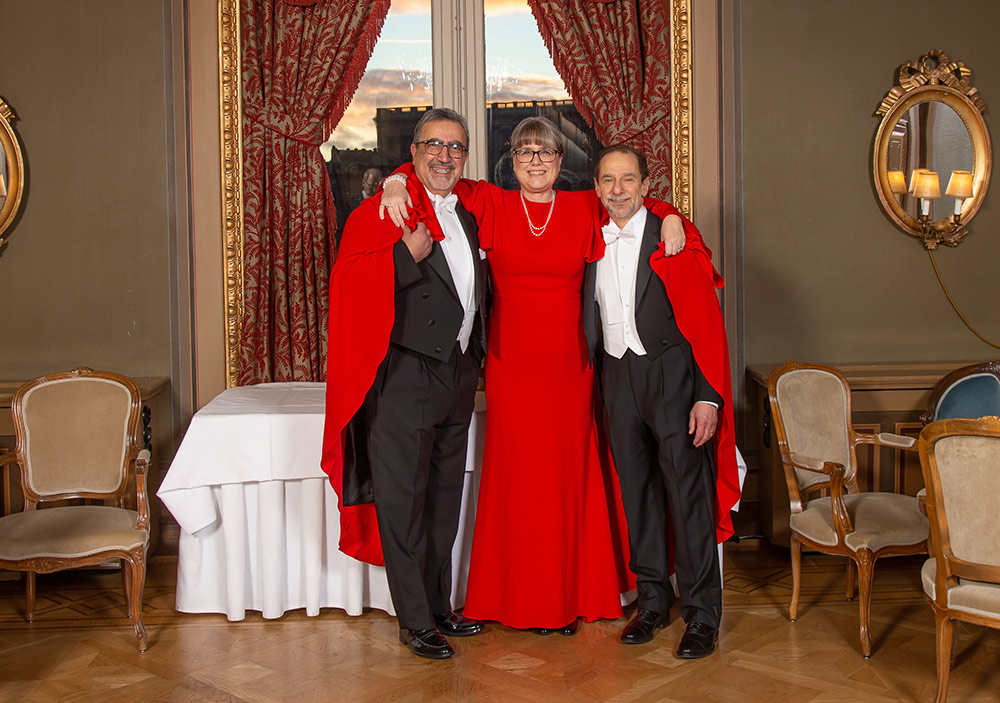
Feridun Hamdullahpur, president and vice-chancellor of the University of Waterloo, left, and University President Richard Feldman, right, join Nobel laureate in physics Donna Strickland ’89 (PhD) to form a “human Canadian Flag” at her suggestion, during the celebrations in Stockholm, Sweden. (University of Waterloo photo)
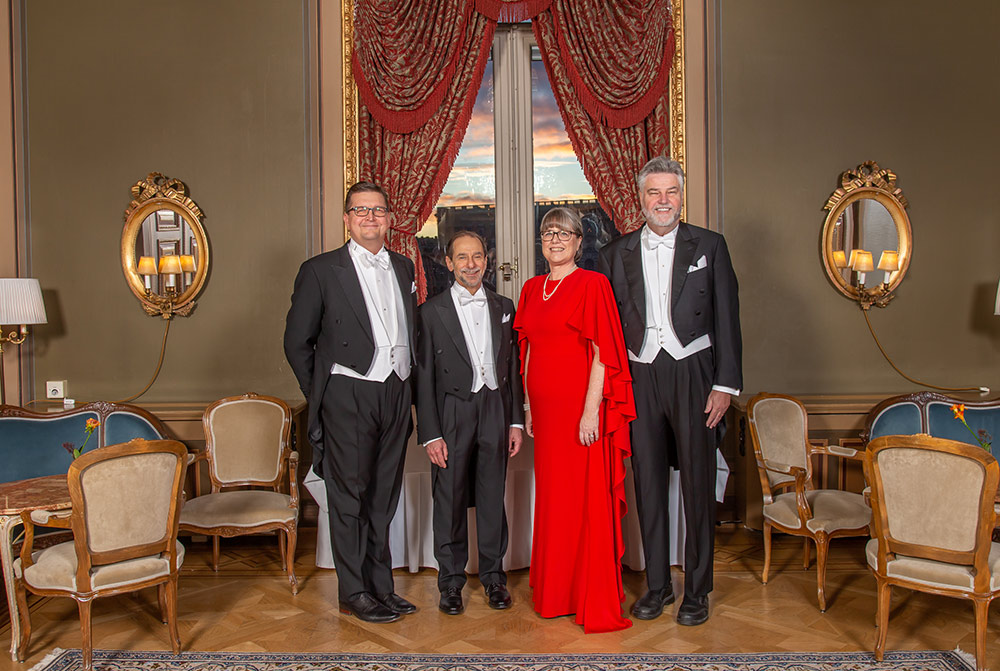
Rochester guests attended the Nobel festivities at Strickland’s invitation. From left, Scott Carney, director of the Institute of Optics; University President Richard Feldman; Strickland; and Michael Campbell, director of the Laboratory for Laser Energetics. (University of Waterloo photo)
In the lab where it happened
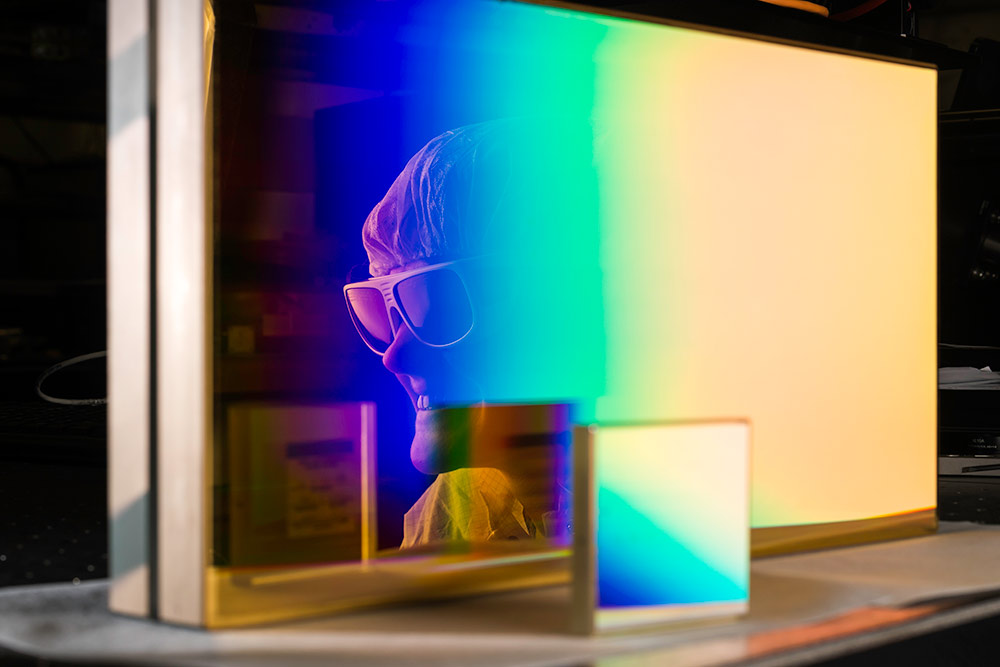
Today’s Rochester researchers are using the chirped pulse amplification science developed at the Laser Lab in their own research to develop the next generation high-power lasers and to better understand the fundamentals of high-energy-density physics.
‘When I found out that you won the Nobel Prize in Physics, I burst with excitement!’
The third woman to receive the Nobel Prize in Physics, after Marie Curie and Maria Goeppert-Mayer, Strickland is the second Canadian woman to receive a Nobel in any field. Writer Alice Munro received the Nobel Prize in Literature in 2013.
As Strickland prepares to make history, former and current colleagues in the world of optics, including at Rochester, have offered congratulations. The good wishes have been part of a steady stream of congratulatory messages from Waterloo colleagues and from Canadian officials, including Prime Minister Justin Trudeau.
Strickland invited four Rochester guests to join her and colleagues from Waterloo at the award ceremonies in Stockholm. The Rochester invitees include President Richard Feldman; Scott Carney, director of the Institute of Optics; Wayne Knox, professor of optics and former institute director; and Mike Campbell, director of the Laboratory for Laser Energetics.
What is ‘chirped-pulse amplification’?
Chirped-pulse amplification, or CPA, is a technique for creating ultrashort, yet extremely high-energy laser pulses necessary in a variety of applications—including the manufacturing of glass for cellphone screens.
When Strickland entered the University’s graduate program in optics, laser physicists were grappling with a thorny problem: how could they create ultrashort, high-intensity laser pulses that wouldn’t destroy the very material the laser was attempting to explore in the first place? Working with Mourou on her doctoral research, Strickland developed and made workable a method to overcome the barrier. They called it “chirped pulse amplification,” and it has proved to be the foundation of many scientific discoveries and commercial applications.
Rochester represents at the 2018 Nobel Prize Ceremony
Read more
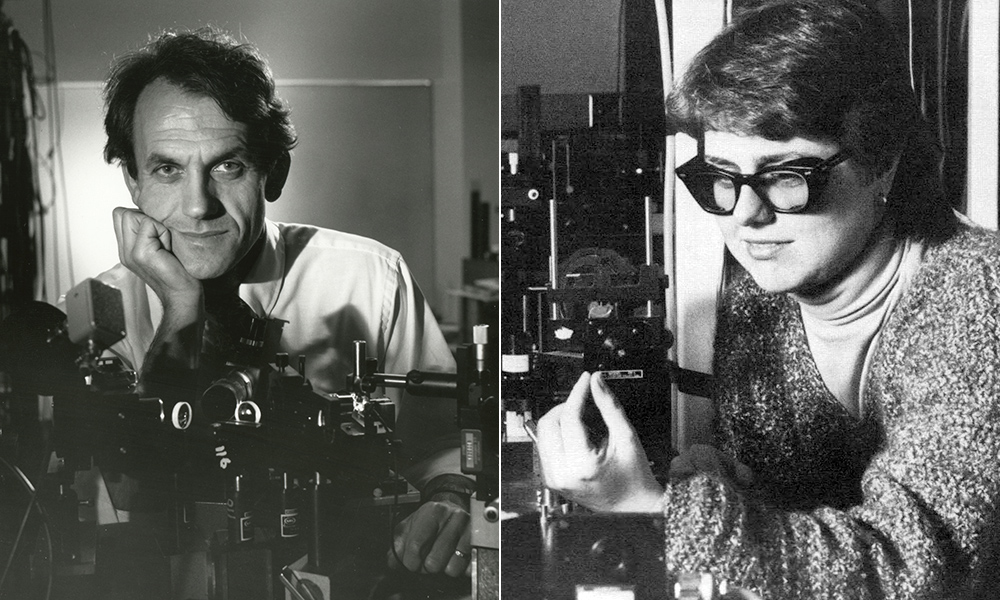
Love at first light
Donna Strickland ’89 (PhD), a self-described “laser jock,” receives the Nobel Prize, along with her advisor, Gérard Mourou, for work they did at the Laboratory for Laser Energetics.
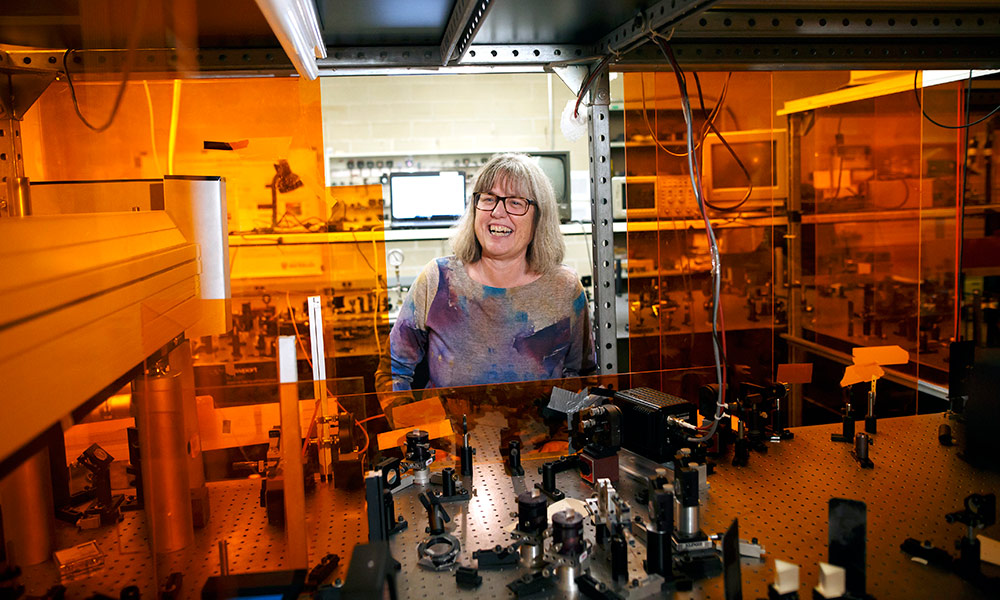
Rochester’s Nobel laureates
Rochester alumni and faculty have to date received a total of 12 Nobel Prizes, across a range of categories that includes physics, medicine or physiology, and economics.
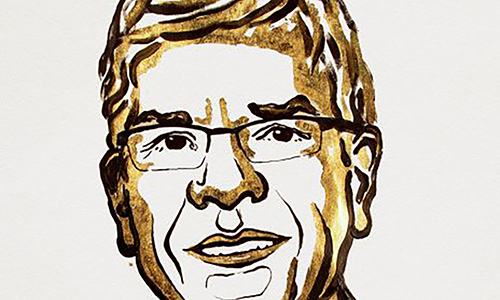
Former economics professor Paul Romer receives 2018 Nobel Prize
The former assistant professor of economics at the University of Rochester is currently a professor at New York University, and was recognized by the Nobel Committee for his work on the economics of technological change.


